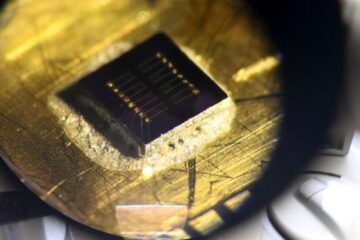Detection of 5-hydroxymethylcytosine in genomic DNA

Diagnostic detection and precise mapping of 5-hydroxymethylcytosine modifications in genomic DNA via enzymatic digestion by PvuRts1I:
5-hydroxymethylcytosine (5-hmC) residues in the human genome have been implicated in the reprogramming of differentiated cells and are therefore potentially important markers for normal and pathologic development. The invention provides a method for determination of 5-hmC modifications with base-pair precision. Genomic DNA samples are melted into single stands, and the second strand synthesized with 5-hmC nucleotides, thus providing templates for cleavage with the endonuclease PvuRts1I. Cleavage products are identified by adapter ligation and either genome wide high-throughput sequencing for research applications, or quantitative PCR for residue specific diagnostic detection.
Further Information: PDF
Bayerische Patentallianz GmbH
Phone: +49 89 5480177-0
Contact
Peer Biskup
Media Contact
All latest news from the category: Technology Offerings
Newest articles

Sea slugs inspire highly stretchable biomedical sensor
USC Viterbi School of Engineering researcher Hangbo Zhao presents findings on highly stretchable and customizable microneedles for application in fields including neuroscience, tissue engineering, and wearable bioelectronics. The revolution in…

Twisting and binding matter waves with photons in a cavity
Precisely measuring the energy states of individual atoms has been a historical challenge for physicists due to atomic recoil. When an atom interacts with a photon, the atom “recoils” in…

Nanotubes, nanoparticles, and antibodies detect tiny amounts of fentanyl
New sensor is six orders of magnitude more sensitive than the next best thing. A research team at Pitt led by Alexander Star, a chemistry professor in the Kenneth P. Dietrich…

















